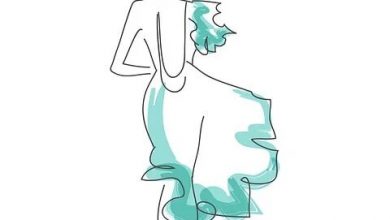The Luck of Roaring Camp” is a tale set in the Roaring Camp, a secluded gold mining settlement nestled along the Mokelumne River in Amador County, California during the tumultuous era of the California Gold Rush. The story depicts a camp area where hope and redemption unexpectedly enter. It revolves around change, redemption and explores the transformative impact of love.
The Luck of Roaring Camp | Summary
“The Luck of Roaring Camp” by Bret Harte is a seminal work of American literature, emblematic of Harte’s writing and exploration of poignant themes within the backdrop of the California Gold Rush. Set in the rugged camps in California, the narrative unfolds amidst the tumultuous lives of a disparate group of miners, their existence fraught with lawlessness and destitution.
The catalyst for a profound change in the narrative’s trajectory emerges with the arrival of Cherokee Sal, an expectant young woman, who inadvertently bestows upon Roaring Camp the gift of newfound hope. She gives birth to a child, Tommy Luck. This innocuous infant instantaneously serves as a catalyst for the transformative awakening of the once-ruthless miners.
The birth of Tommy Luck kindles a resurgent spirit within the heart of Roaring Camp, prompting a profound introspection within the individuals. The coarse miners, driven by an innate sense of redemption, transform their squalid surroundings into an oasis of tender care and nurture, forging an unlikely haven of domesticity. The idyllic reprieve is abrupt when calamity descends upon the camp in the form of a devastating flood, causing the tragic loss of young Tommy Luck.
The Luck of Roaring Camp | Analysis
Through the allegorical narrative, Harte interweaves timeless themes of redemption, communal unity, and the ephemeral nature of human happiness. The feeling of “luck” embodied by Tommy serves as a metaphorical portrayal, illustrating the transformative potential lurking within the most hardened souls.
The author establishes a particular tone throughout the story, which helps to shape the reader’s emotional response. The tone varies from gritty and bleak to hopeful and tender. As the story progresses, the tone becomes more tender as the miners show care and love for the baby. The shifting tones enhance the narrative’s emotional impact.
The writer crafts a vivid and immersive atmosphere, where the palpable grit and lawlessness of Roaring Camp are indicative of the harsh realities of existence. Nature, particularly the wild and untamed surroundings of Roaring Camp, serves as a symbolic backdrop throughout the story. The harsh and rugged landscape mirrors the moral wilderness inhabited by the miners. Harte employs nature as a powerful metaphor, reflecting the tumultuous human experiences and the transformative potential found within the natural world.’
Harte employs the birth of the innocent infant as a powerful symbol, skillfully juxtaposing the inherent purity of infancy with the squalor and hardships endured by the miners. The presence of the baby triggers a remarkable transformation within the calloused individuals, compelling them to rise above their primal instincts and embrace the profound responsibility of caretakers.
The silver tobacco box, silver spoon, and gold coins bestowed upon Tommy represent the abundance of precious metals, specifically silver and gold, found in Roaring Camp. These items symbolize the wealth and prosperity associated with the mining community. They emphasize the importance of gold and silver in the lives of the miners, serving as tangible reminders of their pursuit of fortune.
The growth and descriptions of each character capture the multifaceted nature of the people of Roaring Camp. From the brazen and uncouth to the vulnerable and desolate, each persona contributes to the tapestry of the narrative. Cherokee Sal, initially depicted as a figure of transgression and moral ambiguity, emerges as a tragic figure caught in a conflict between societal expectations and her own frailty. The miners themselves, initially portrayed as greedy and unscrupulous, undergo a profound moral awakening in the face of Tommy Luck’s arrival, as they discover the latent nobility within their hearts.
The climax acts as a drastic change in the narrative where a ravaging flood results in the tragic loss of the camp’s “luck”, obliterating the emerging hope that had blossomed in its midst. This devastating impact symbolizes the ephemeral nature of happiness and the precariousness of human existence. The loss of Tommy Luck also serves as a poignant reminder of the transient nature of innocence and redemption, leaving the inhabitants of Roaring Camp forever altered.
The flood theme in the story may have been influenced by an actual event that Bret Harte personally witnessed – the Great Flood of 1862 in California. This devastating flood, which resulted from heavy rainfall and caused widespread destruction, left a lasting impact on the region. Harte likely drew upon the dramatic effects of this flood, with its destructive power and the subsequent disruption of lives and communities, to incorporate into his narrative. Capturing the zeitgeist of a bygone era while exploring timeless themes, delves into the complexities of human nature, highlighting the transformative power of compassion, the fragility of innocence, and the enduring hope that can emerge from the unlikeliest of circumstances.
By infusing elements of real history and personal observations into the story, Harte adds a sense of authenticity and realism to “The Luck of Roaring Camp.” This connection to the actual location and events lends depth and credibility to the narrative, allowing readers to engage with the story on both an emotional and historical level. The story acts as an unremitting lamentation, compelling the survivors to confront the inherent fragility of existence and the transient nature of happiness.
The Luck of Roaring Camp | Themes
“The Luck of Roaring Camp” encompasses several profound themes that resonate with the human condition, offering insightful commentary on redemption, communal solidarity, the dichotomy of innocence and corruption, and the ephemeral nature of happiness.
Harte delves into the redemptive power of unexpected circumstances and the potential for personal transformation. The birth of Tommy Luck serves as a catalyst for the miners of Roaring Camp to transcend their sordid lives and embrace a newfound sense of responsibility and compassion. The baby becomes a symbol of hope and potential, blurring the lines of class divisions among the miners. The initial prejudice is foregone after the baby’s arrival and hints at the fragility of social structures in the face of innocence.
The narrative highlights the capacity for individuals to undergo moral regeneration and find redemption even in the harshest of environments. The miners, typically driven by self-interest and avarice, rally together to create a nurturing environment for the child. Depicts that strength can be found in collective efforts and the bonds that form within unlikely communities, highlighting communal solidarity.
The story also presents a dichotomy between innocence and corruption, the introduction of Tommy Luck, an innocent child, into the morally depraved environment of Roaring Camp, accentuates the stark contrast between purity and vice. The tale explores the potential for goodness to emerge even in the most corrupt surroundings, while also highlighting the fragility of innocence in the face of harsh realities. However, the story also diverges and illustrates the transient nature of happiness and human existence.
The sudden arrival and subsequent tragic loss of Tommy Luck serve as a poignant reminder of the fleeting nature of joy and the inherent vulnerability of human lives. Such a depiction emphasized the transient nature of life and the potential for tragedy to disrupt even the most hopeful circumstances. The story prompts contemplation on the fleeting nature of our mortal existence and urges readers to cherish and appreciate moments of bliss amidst the turbulent currents of life, while also portraying the unpredictability of such events and surmounting difficulties.
The miners, initially depicted as rough and lawless, exhibit prejudiced attitudes toward Cherokee Sal due to her occupation as a prostitute. However, the birth of Tommy Luck challenges these prejudices and prompts a reevaluation of social norms. The narrative explores the potential for individuals to rise above societal prejudices and embrace compassion and acceptance. The miners also sacrifice their time, resources, and even personal desires for the well-being of the child, such acts bring to light the power of selflessness and the capacity for individuals to find purpose and fulfillment through acts of sacrifice.
The Luck of Roaring Camp | Title
“The Luck of Roaring Camp,” as a title, encapsulates the thematic essence. The word “luck” in the title carries a dual meaning. It refers to the fortuitous arrival of the baby, Tommy Luck, in the camp. The birth of the child is seen as a stroke of luck or fortune, bringing an unexpected source of hope and renewal to the desolate and despairing community while also suggesting that “luck” alludes to the unpredictable and capricious nature of fate.
The Luck of Roaring Camp | Character Sketch
Cherokee Sal, a coarse and destitute woman, epitomizes the marginalized and dispossessed in society. Her entrance into the male-dominated Roaring Camp disrupts the established order, catalyzing a series of unforeseen events. Sal, though hardened by her circumstances, carries within her the potential for maternal tenderness and serves as a catalyst for the camp’s metamorphosis.
Kentuck, a rugged and rough-hewn miner, personifies the camp’s unruly and untamed spirit. Possessing a gruff exterior, he harbors a flicker of compassion that emerges in his interactions with Sal and the newborn child. His transformation from an aloof and lawless individual into a nurturing figure showcases the transformative power of human connection and the potential for growth in the most unlikely of souls.
Stumpy, a grizzled and weather-beaten prospector, stands out as a curmudgeonly but shrewd observer of human nature. As the de facto leader of the miners, Stumpy’s grizzled wisdom and authoritative presence lend the camp a semblance of order and structure. Tommy Luck, the central symbol of hope and renewal, embodies the innocence and purity that exist within the depths of human nature.
The Luck of Roaring Camp | Literary Devices
The story employs various symbols to convey deeper meanings. One prominent symbol is the baby, Tommy Luck, who represents hope, innocence, and redemption. When the baby is born, the lines “It certainly had been raining in Roaring Camp. The camp had overflowed, and ‘Roaring Water’ had made itself heard above the turmoil of the camp.” Here, the rain and overflowing water symbolize the purifying and transformative effect that the baby will have on the camp.
The incorporation of vivid imagery helps readers establish the contrasting atmosphere as the story progresses:
“The cabin… half-sunken in the moist, rotten soil, trailing its irregular chimneys like a wreck.”
This imagery not only paints a vivid picture of the deteriorating and desolate condition of the cabin but also establishes a sense of decay and abandonment that mirrors the initial state of the camp before the arrival of the baby.
The inclusion of the revolver as a gift holds situational irony within the story. It alludes to the gun culture prevalent in California during that time period. However, the gift of a firearm is ironic considering the fate of “French Pete” and “Kanaka Joe,” two characters who meet their demise by shooting each other with revolvers. This irony serves as a reminder of the violence and lawlessness that can accompany the pursuit of wealth in the Wild West –
“…the minority meekly yielded in the hope that something might turn up to prevent it. And it did.”
Harte foreshadows the subsequent devastation that will strike Roaring Camp and disrupt the newfound happiness. This foreshadowing builds suspense and prepares the reader for the impending tragedy. Furthermore, the presence of the Bible among the gifts has a foreshadowing effect. It hints at the religious undertones that will play a role in future events. The reference to Sabbath at the beginning of the story alludes to potential conflicts and moral dilemmas that may arise in Roaring Camp, tied to religious beliefs and the observance of religious practices.



